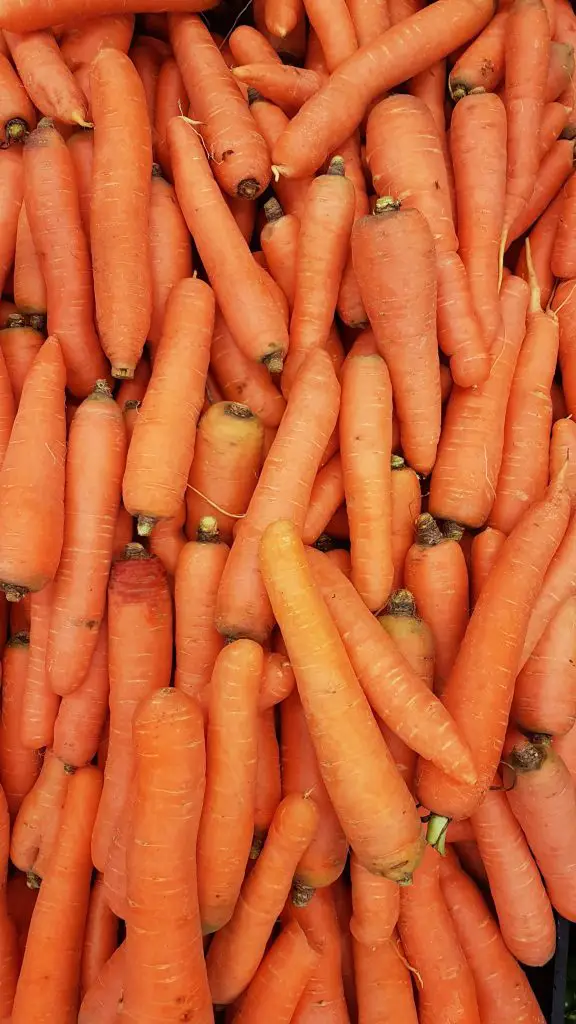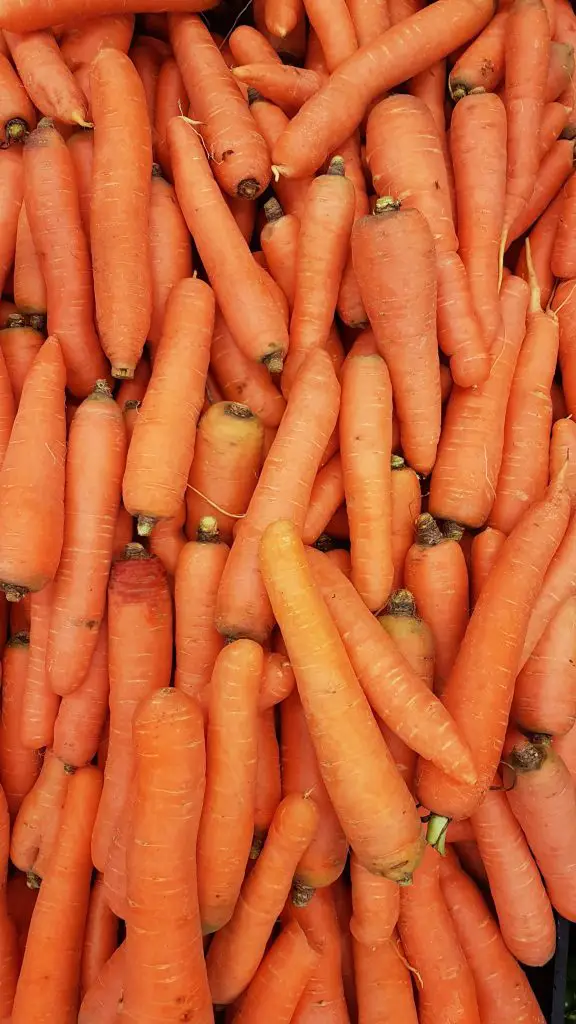How Deep Do Carrots Grow? Does The Type Matter? Carrots are a popular vegetable to grow at home in the garden. They can be grown in the open garden or in a raised bed, however, if you are planning to plant them in a raised bed one of the things you may want to know is how deep the roots get.
Carrots will typically produce roots that are between 4 and 10 inches deep depending upon the specific variety of carrot grown in the garden. The carrots can generally be divided up into 4 different varieties which are Imperator, Danvers, Nantes, and Chantenay, with Imperator varieties producing the largest root.
Imperator carrots are carrots that are generally used to produce baby carrots for grocery stores because they have a high sugar content and produce a reasonably sized root relatively quickly. However, if you are not growing them as baby carrots they will generally struggle if they are placed in compacted or rocky soil due to the size of the root that can be produced. The length of root typically produced in mature carrots of this type is around 10 inches
The second type of variety which is widely grown is Danvers. This variety is a medium-sized carrot that typically gets to around 6 to 7 inches long and is a little bit more tolerant of heavier soils than the Imperator types. The Danvers type carrot is the one that is most commonly sold in supermarkets.

The third type is Nantes carrots which are heirloom varieties that originated in France and have a cylindrical shape with a smooth surface that is typically the same diameter from end to end. These carrots are also almost completely coreless and have a relatively sweet taste. To get the best results for these particular times it is best to use a free draining loose soil.
Chantenay carrots are the variety that I grow at home and these varieties typically have the classic cylindrical shape that we all associate with carrots. They are moderately sized carrots which is more tolerant of compacted soils than other varieties.
Outside of these general types, you can also buy varieties that have round-shaped bulbs similar to a radish which tend to not penetrate soil very much. These varieties are most suitable when there are difficult soil conditions.
Are Carrots Difficult To Grow?
Carrots are generally considered to be one of the more challenging vegetables to grow primarily because many gardeners have difficulty germinating the seeds particularly when the weather starts to warm up.
The reason for this is that carrot seeds are generally sown in relatively shallow farrows that require constant moisture the entire time until they germinate and they are slow to germinate. This means that in warmer weather the surface of the soil can dry out relatively quickly making it difficult to get consistent germination for the carrots.

As a result of this, it is common for many gardeners to get patchy germination which gives carrots a reputation of being relatively difficult to grow. However, if you can get the seeds to germinate in the first place the carrots are relatively easy to grow.
How To Grow Carrots
Carrots are a frost tolerance vegetable that can be planted throughout the year, however, it is generally recommended that they be planted in the cooler parts of the year to allow germination to occur more easily.
In terms of where you plant them, carrots are one of the few crops that should ideally be directly sown rather than planted into seed trays. The reason for this is that carrots do not like root disturbance and transferring them from the seed tray to the garden can result in deformation of the roots.
However, as mentioned above carrots can be difficult to germinate particularly in warmer weather. To increase your chances of getting the carrots to germinate there are several things you can do that will help to get them going.
The first thing that we recommend is at the very least pre-soaking the carrot seeds for an hour or two before they are planted.
If you are planting into a garden bed it is highly recommended that you pre-soak the soil before placing the seeds into the furrow. The furrow should be relatively shallow at a quarter to half an inch and the seeds need to be sowed relatively thinly to avoid overcrowding.

The farrow there needs to be backfilled with soil before being watered again. It is then advisable to apply a layer of mulch that is approximately 2 to 4 inches thick. In the early stages of the seed germination is important to maintain moisture by regular watering until the plant starts to appear.
However, as mentioned above many people have trouble getting consistent germination because they have difficulty maintaining moist soil for long enough. As a result of this, they often experience patchy germination.
If this is the case another method that is often used is to germinate seeds on a moist paper towel before planting them in the garden. To do this place a damp but not sodden paper towel into a plastic container with a resealable lid. Sprinkle the carrot seeds across the paper towel seal the container with the lid and leave them for approximately 4 to 7 days.
After this period you should begin to see the early signs of the seeds beginning to germinate once they are at this stage they can be transplanted into the garden avoiding the problems with patchy germination.

Caring For Carrots
Once the plant becomes established there is actually very little maintenance required other than to ensure that the plants have a consistent supply of water. Irregular watering will often result in the carrots’ tuber cracking so is important to be consistent with your watering.
The other common problem that carrots experience is that the shoulders of the carrots can become green if they are exposed to light. To avoid this issue it is best to cover the tops of the carrots with a layer of mulch as they develop.
Harvesting Carrots
Carrots can be harvested at almost any stage provided that the root is of a reasonable size. To start this process it is best to regularly inspect your carrots to see how they going. In most cases you will find that the carrots can become overcrowded because the seeds have not been sown thinly enough. If this starts to be the case it is advisable to thin the carrots out by taking an initial harvest of baby carrots.

When removing the carrots from the garden is important to do it gently to ensure that you do not disturb other carrots which are left behind. If they remain relatively undisturbed they will continue to grow on and produce full-size mature carrot later in the season.
It is important a note that carrots can also be left in the ground for an extended period of time particularly in winter when the growth slows down and harvested when required.
However, if you live in a region where the ground freezes solid it is advisable to pick your carrots out before this happens otherwise they will become difficult to remove. If they come from the ground then they can be stored in damp sand for several months as this mimics the conditions the carrots would experience in the soil.
I hope you found this article useful and a great success growing your carrots. If you have any additional questions or comments please leave them in the section below.
Relevant Articles
How Many Carrots Grow From One Seed?
Are Green Carrots Safe To Eat? What can I Do To Stop Them From Turning Green?
Tricks To Planting Carrot Seeds That Really Work
